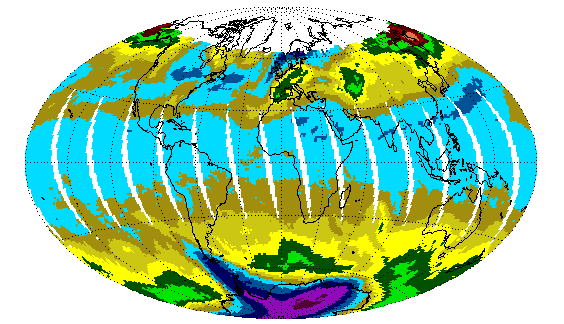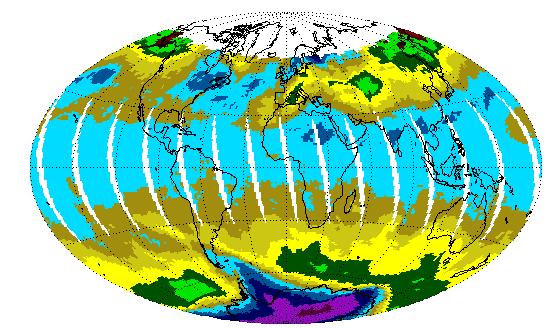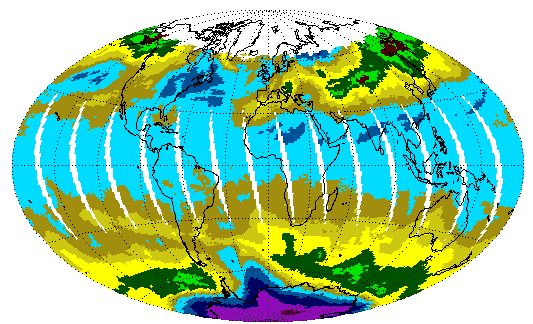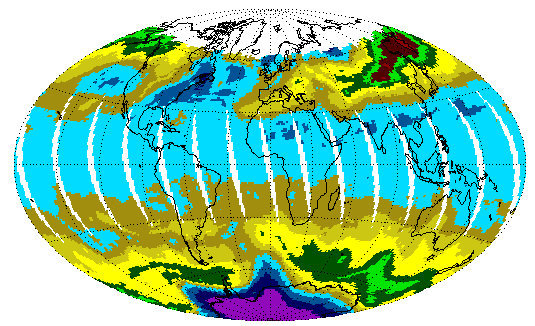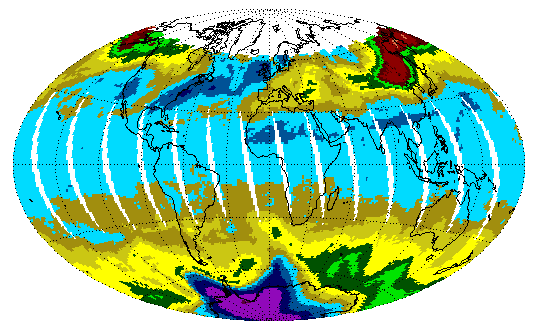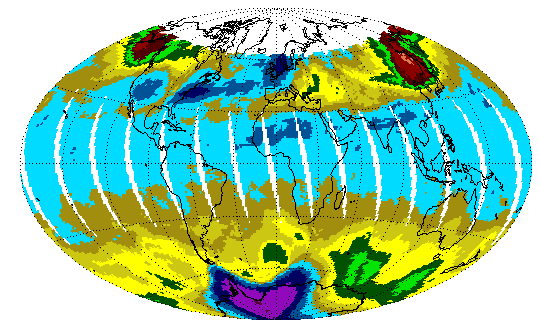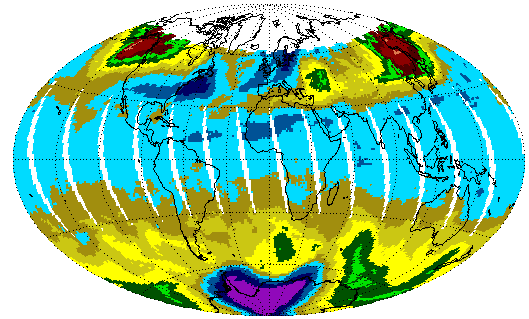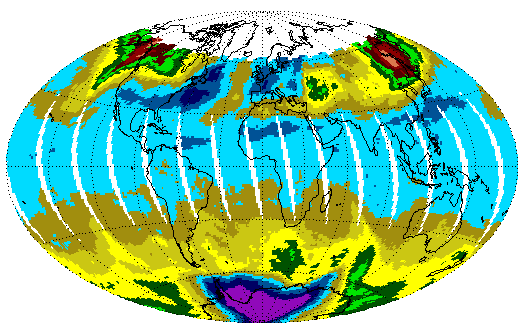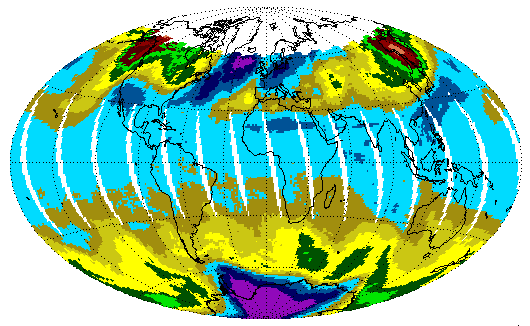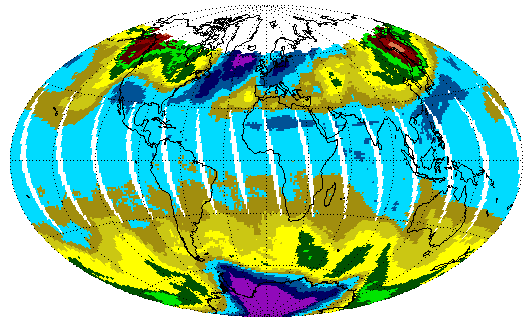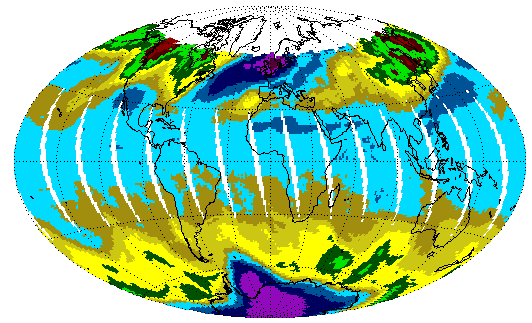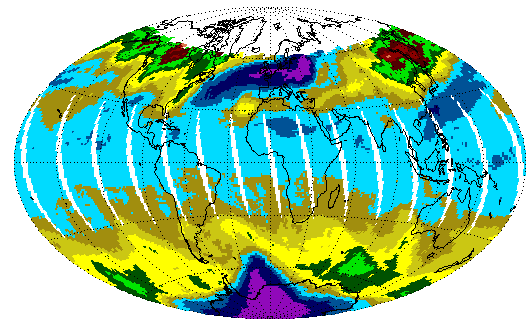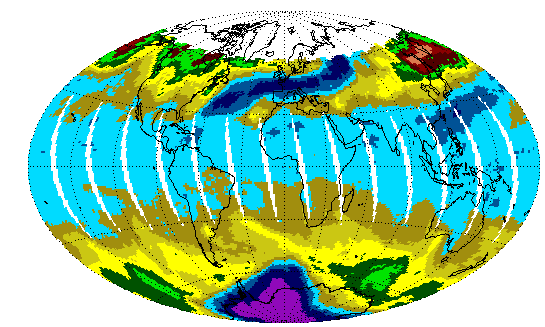|
Scientists
"Concerned" Ozone layer over Europe dwindling
-European
Space Agency 2 December 1999
PARIS -
The ozone layer over Britain, Belgium, the Netherlands and Scandinavia has
dwindled to worrying levels nearly as low as those found in the Antarctic, the
European Space Agency (ESA) said Thursday.
Measurements taken in the Netherlands showed local ozone levels were some
two-thirds below the norm for this time of year, confirming the abnormally low
levels detected over northwest Europe this week, ESA said in a statement.
The ozone layer, high up in the atmosphere, shields Earth from much of the sun's
harmful ultraviolet rays. A gradual thinning due to emissions of damaging
man-made chemicals has increased the occurrence of skin cancer and other
illnesses related to over-exposure to ultraviolet rays, scientists say.
The damage to the ozone layer is worst over Antarctica where a hole about twice
the size of China and more than two-and-a-half times the scope of Europe has
developed.
TOMS Observes Low Ozone Event in
Northern Hemisphere-NASA
|
A NASA Goddard Space Flight
Center satellite has observed the lowest value of ozone ever seen in the
Northern Hemisphere since satellites first began ozone measurements in
1978. The measurement was obtained on November 30, 1999 using the Total
Ozone Mapping Spectrometer (TOMS) instrument aboard NASA's Earth Probe
(TOMS-EP) satellite.
"This is an extremely low
measurement of ozone for the Northern Hemisphere," said Dr. Richard
McPeters, Principal Investigator for Earth Probe TOMS
The measurement showed 165
Dobson Units (DU) over the North Sea between Scotland and Norway on
November 30, 1999.
The previous low value of
167 DU was observed in the same region on October 30, 1985. The lowest
values of ozone in the Northern Hemisphere are typically seen in the late
fall period. However, these low northern values rarely drop below 180 DU.
"A combination of
stratospheric and tropospheric weather systems can occasionally create
these extreme low ozone events," said Dr. Paul A. Newman of the NASA
Goddard Space Flight Center. "We understand that dynamics can cause these
low ozone events, but we're unsure why this event set a new record low
value."
|
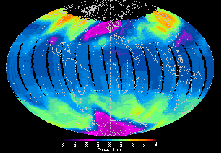
November 30, 1999
|
|

TOMS Satellite
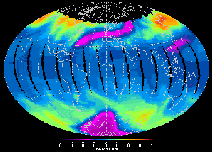
December 2, 1999
|
The NASA images also indicate that
the ozone event was also forming along the Eastern Seaboard over the United
States and Canada on November 26,1999 but moved towards Europe over the next few
days. The ozone levels also dropped over the Western United States as observed
from these images.
Images from Earth Probe TOMS Satellite
(Total Ozone Mapping
Spectrometer)
Nov 26, 1999
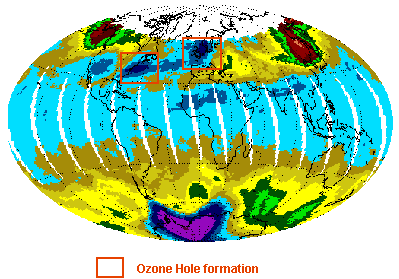

Nov 26,1999 Ozone Hole formation
enlarged view
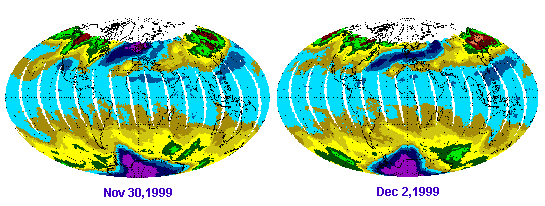
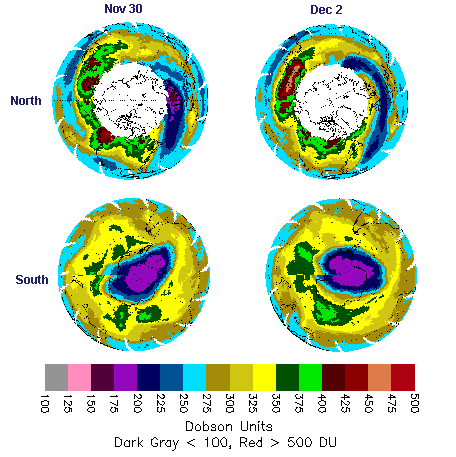
NASA TOMS images
The NASA TOMS images show that the ozone hole started forming over The United
States and Canada as early as November 21, 1999.
The Canadian Environment images from Nov 20- Dec 2,1999 indicate that the
ozone hole was also forming along the Eastern Seaboard over the United States
and Canada . The ozone levels also dropped over the Western United States as
observed from these images. The total ozone maps for the northern hemisphere are
based on near-real time NASA Earth Probe Total Ozone Mapping Spectrometer (TOMS)
gridded satellite data available from the NASA TOMS home page
and on ground-based measurements provided by Environment Canada
and by
the Russian Central Aerological Observatory. If available, other
ground-based total ozone observations are also used.
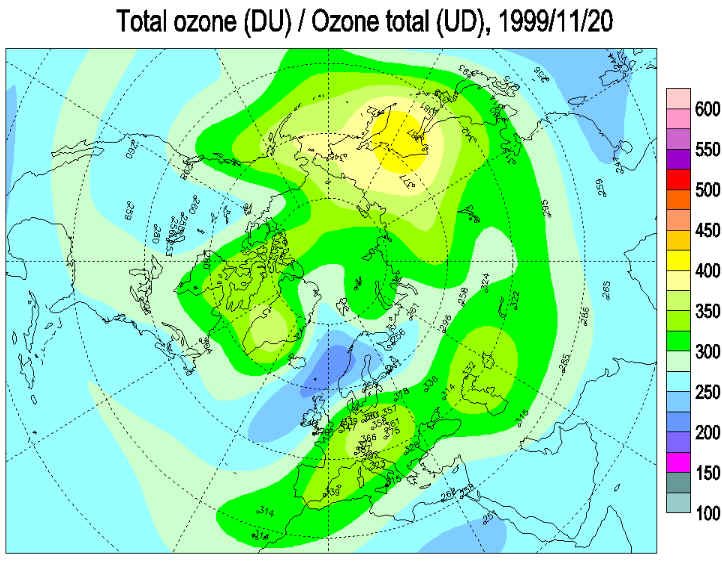
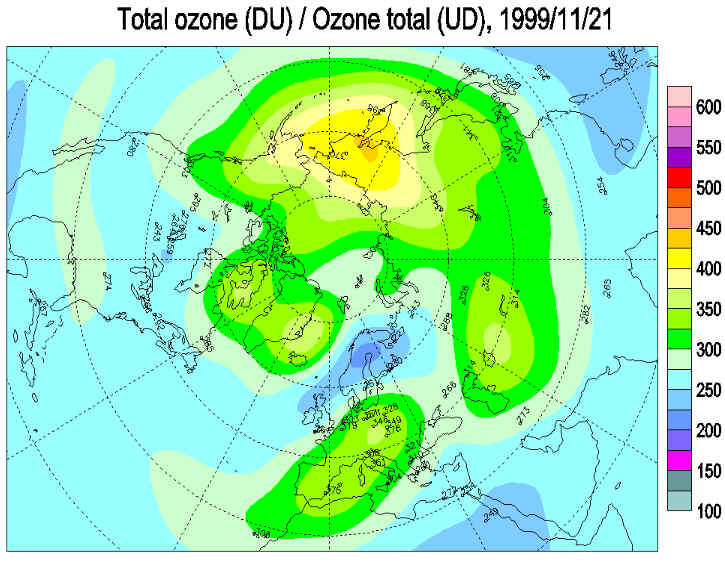
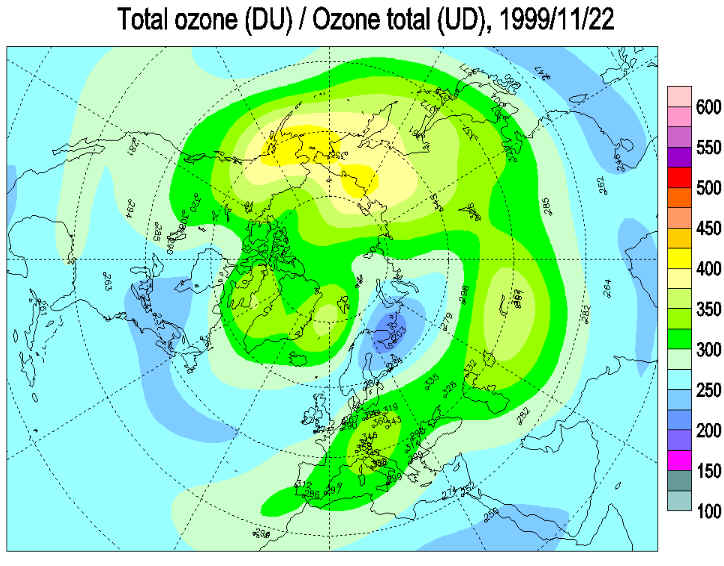
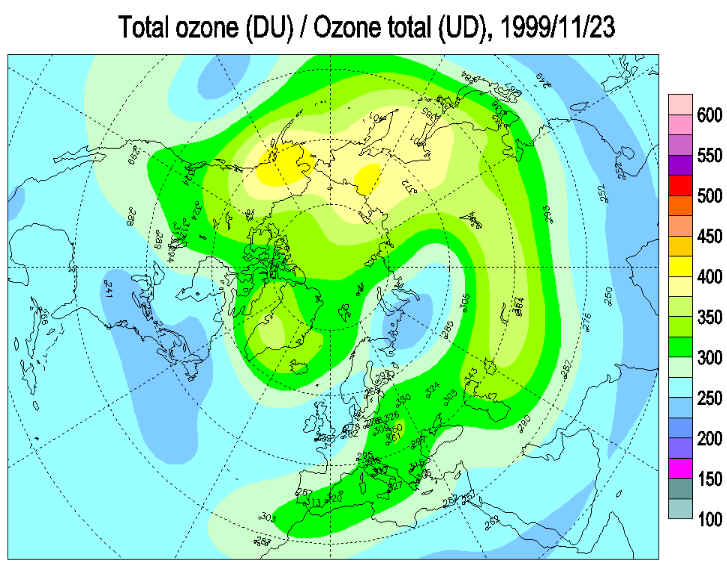
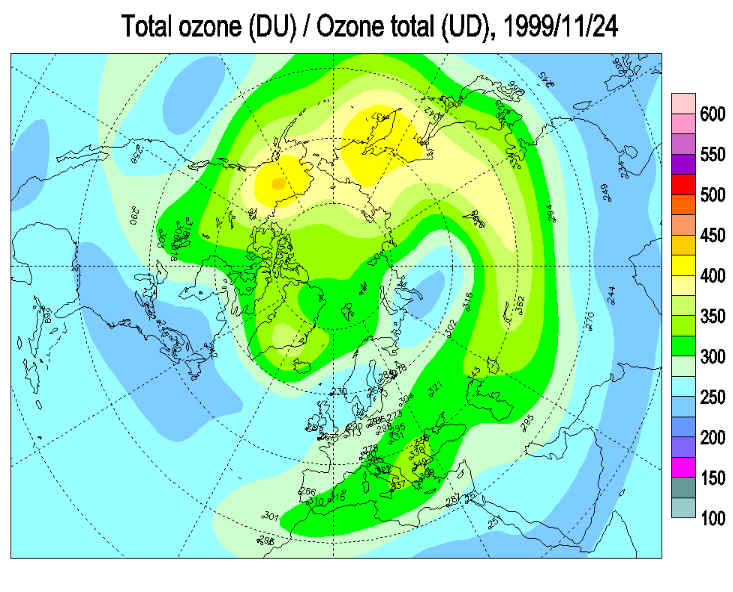
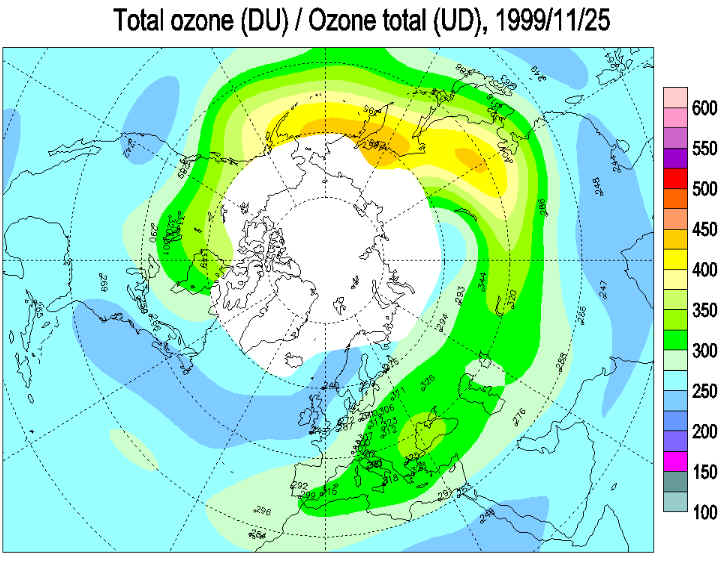
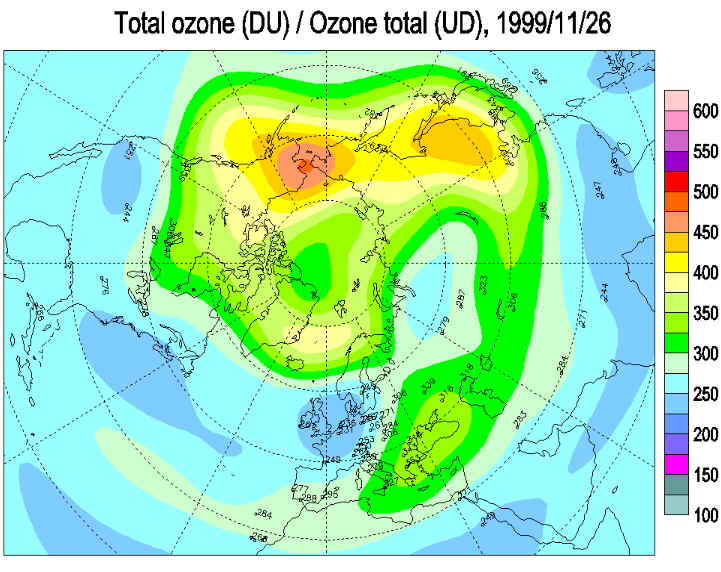
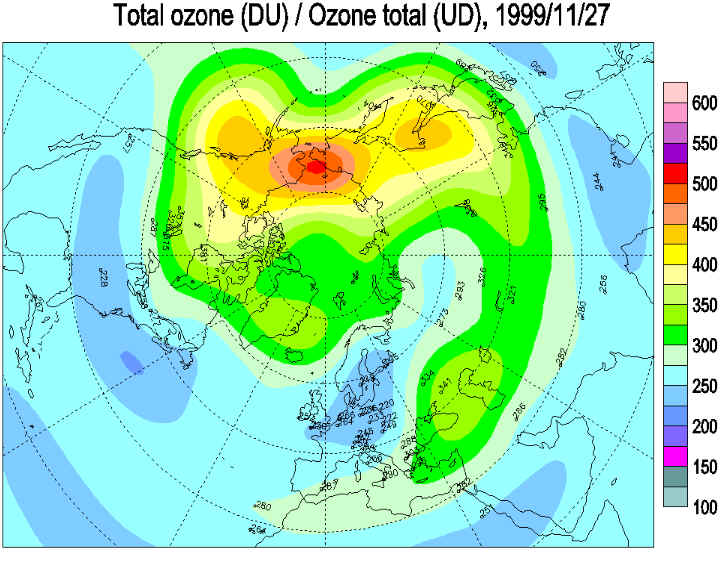
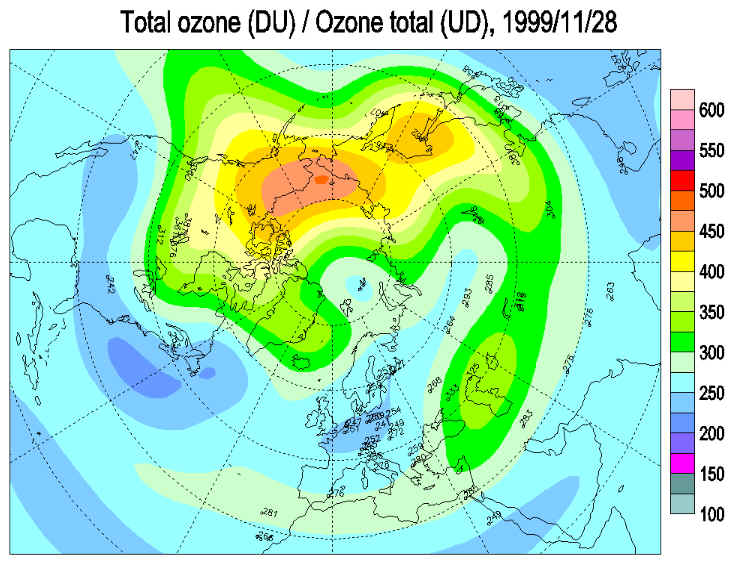
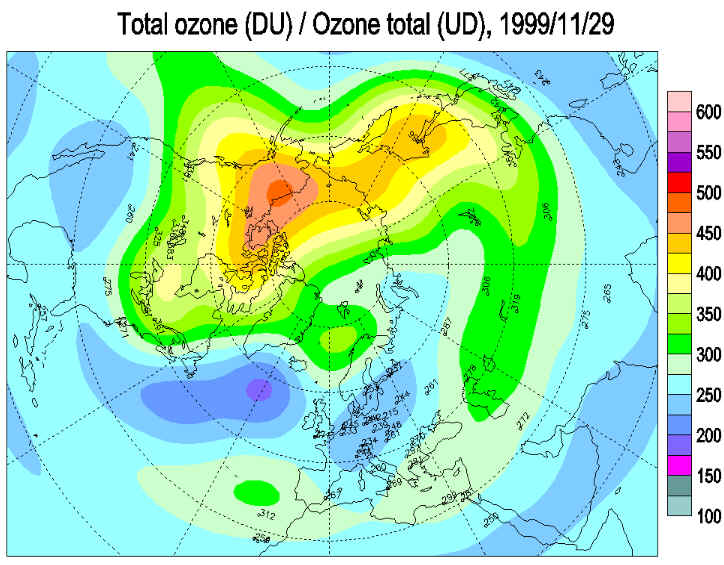
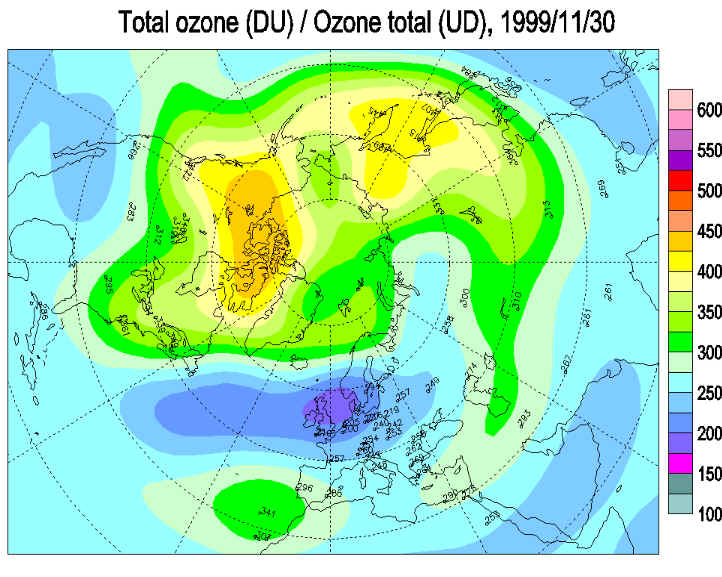
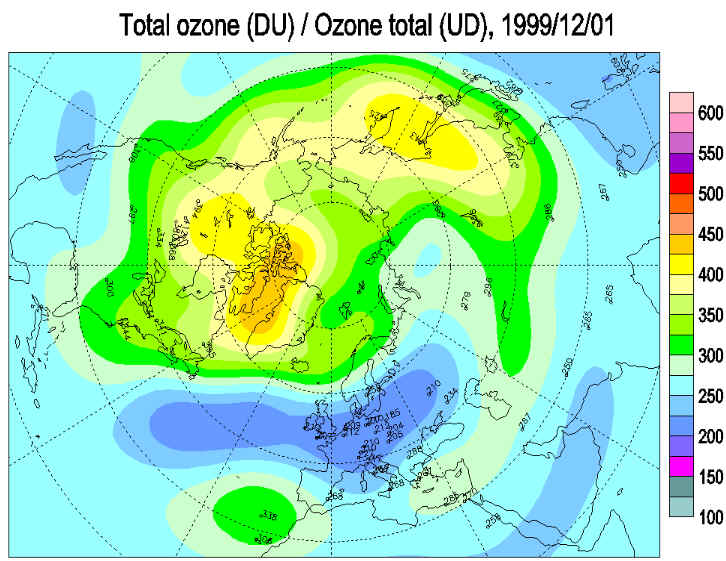
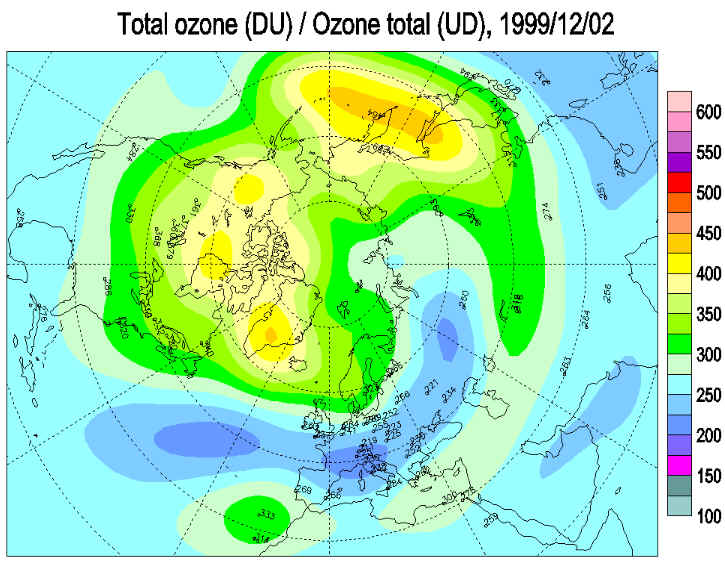
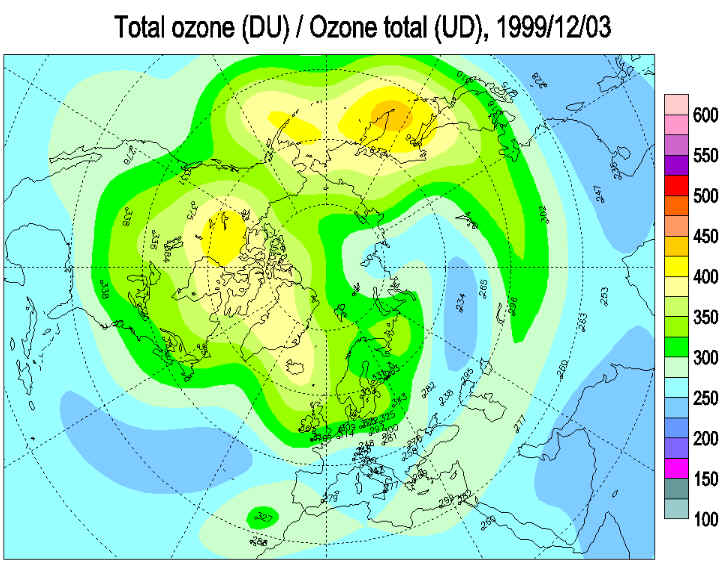
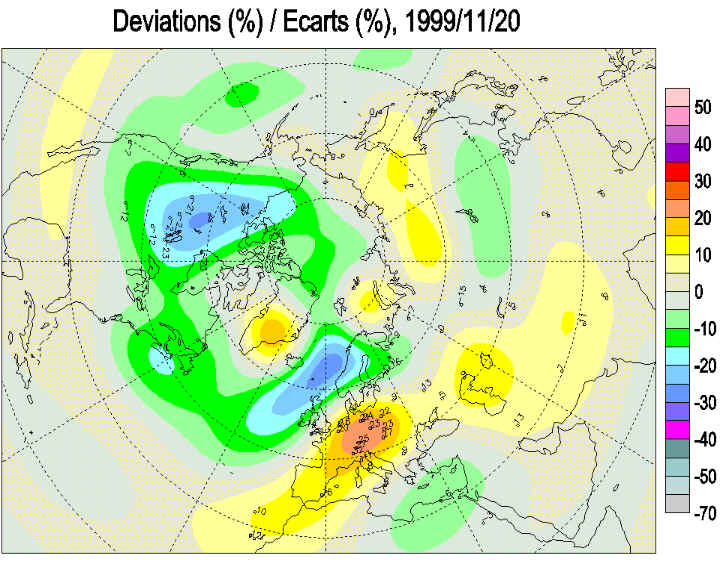
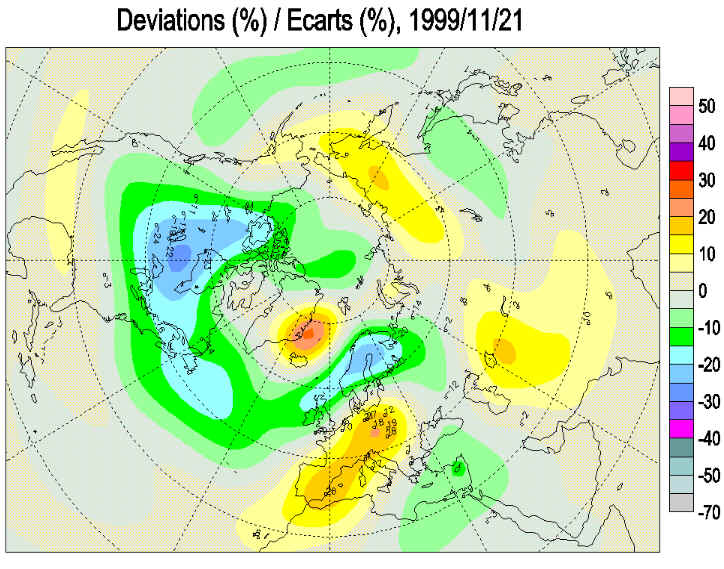
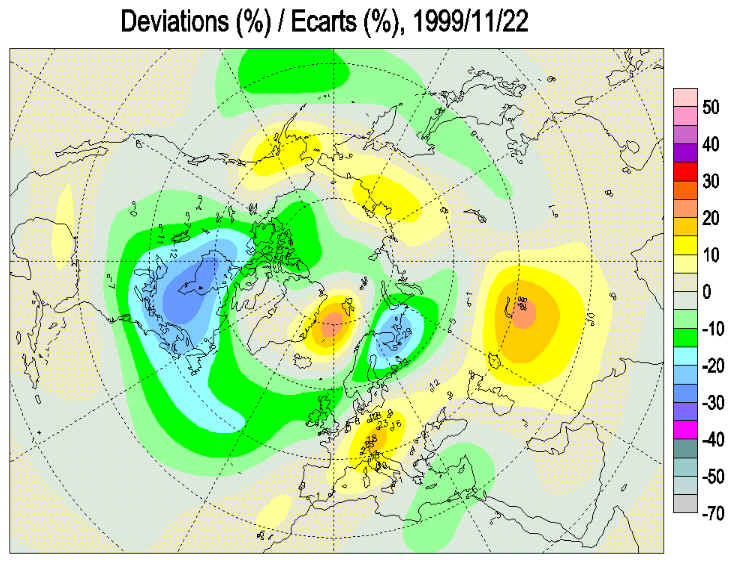
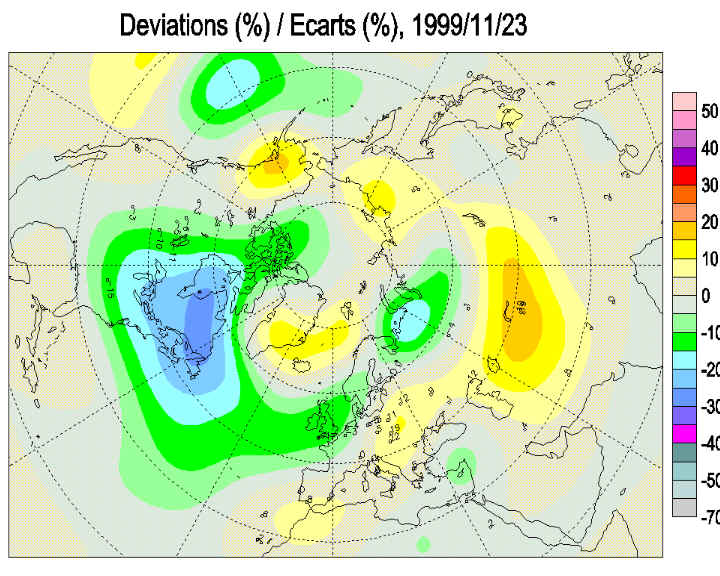
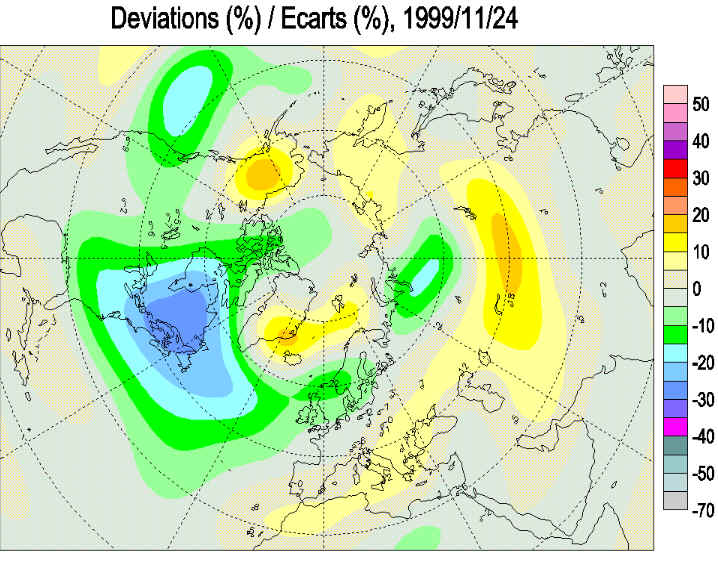
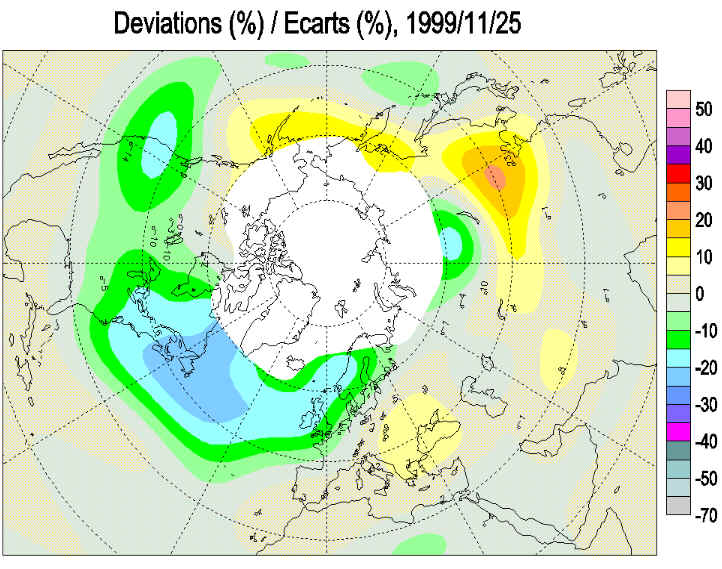
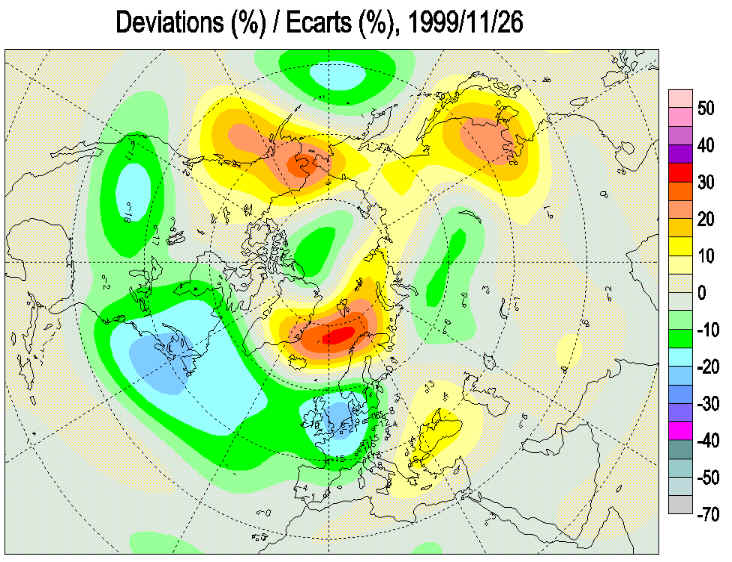
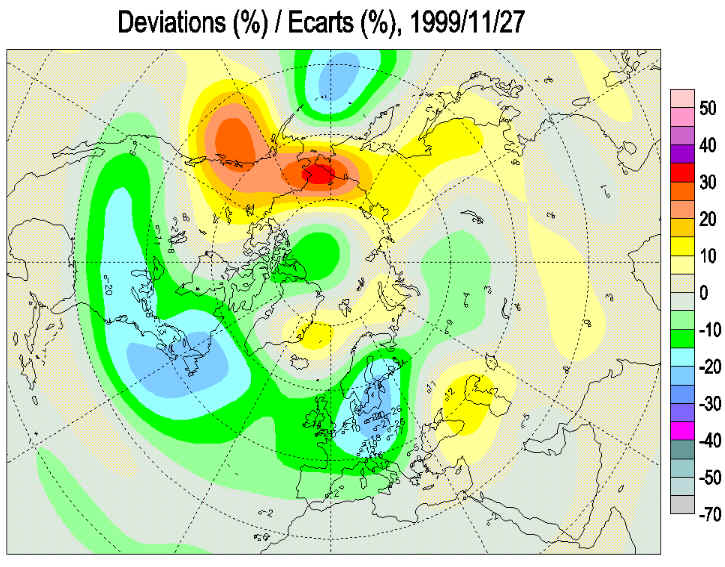
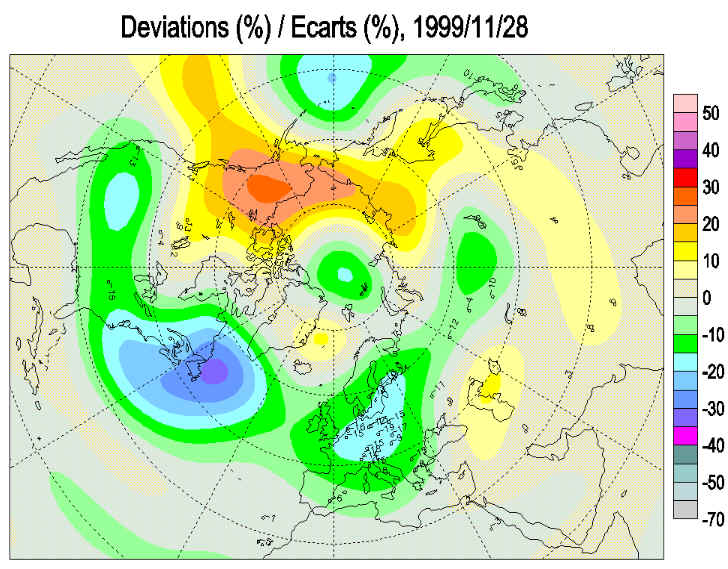
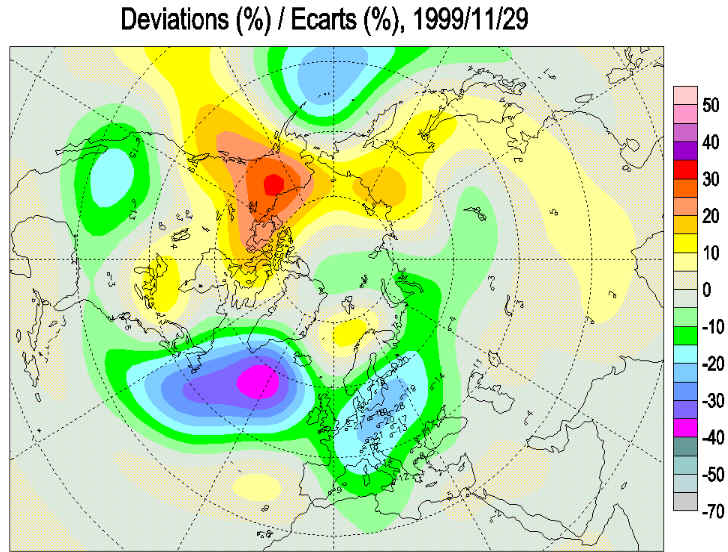
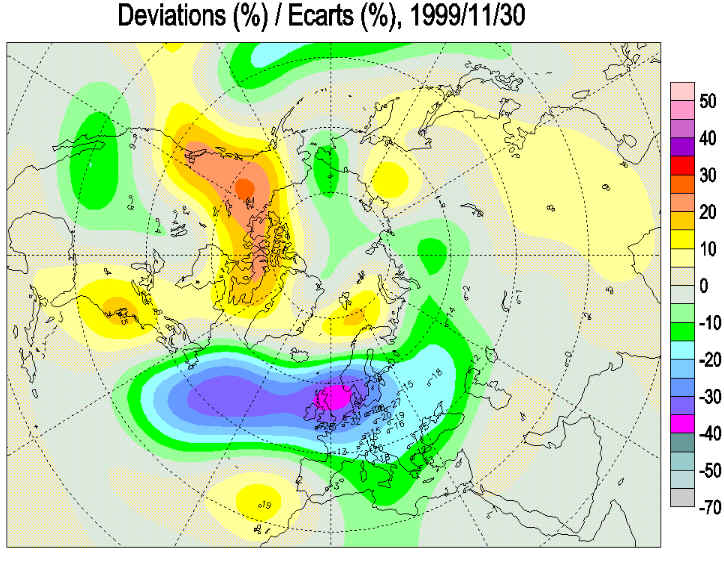
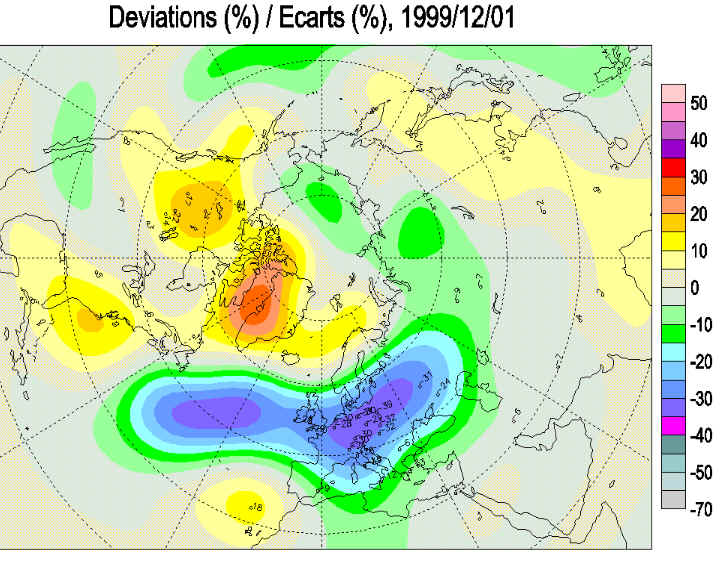
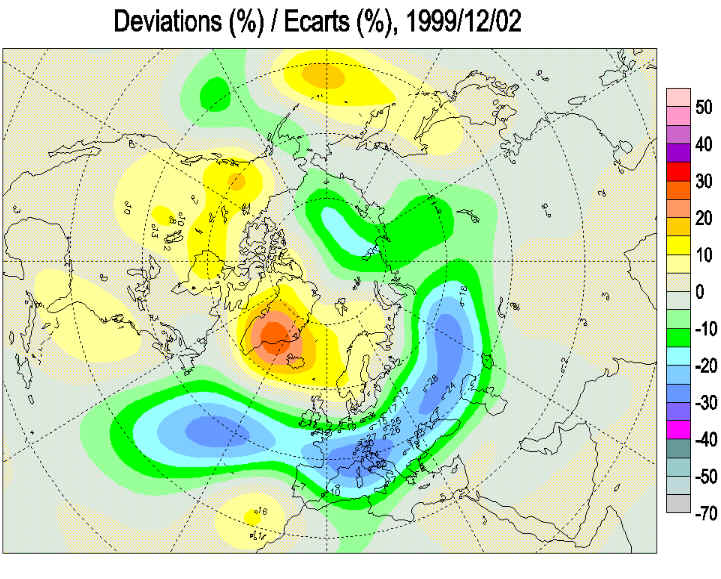
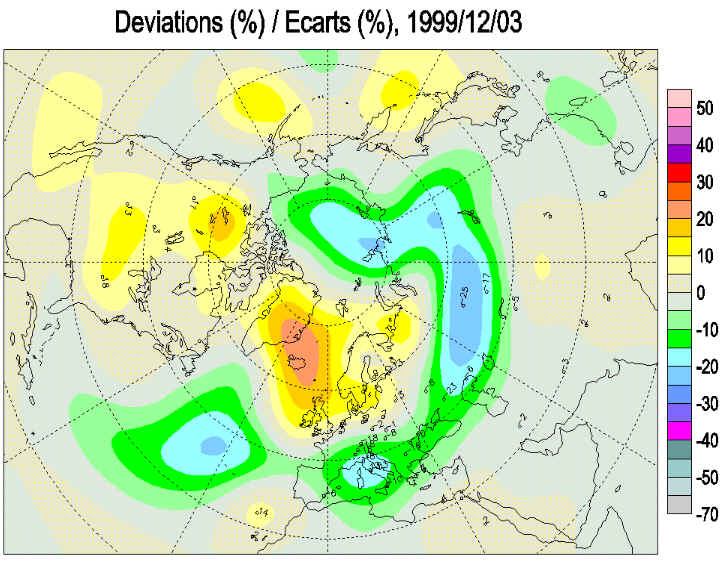
|








